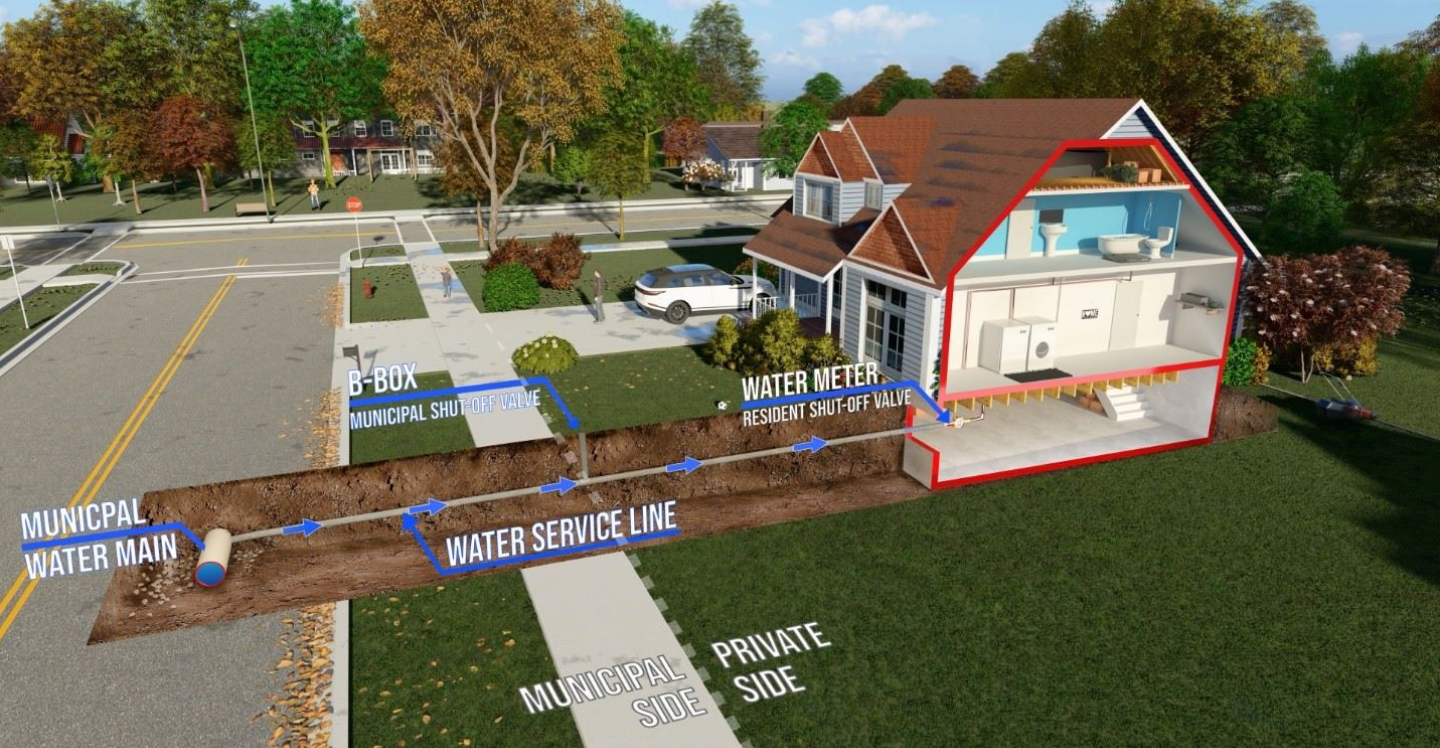Is water pooling around your property or parking lot after heavy rain? Canadian Rooter offers professional catch basin services: installation, cleaning, and replacement to ensure proper drainage and protect your home or commercial space from water damage. Get a free estimate and consultation today.





Protect Your Property with Professional Catch Basin Services
Catch basins, also known as storm drains, play a crucial role in collecting and directing excess rainwater away from your property. Traditionally used in commercial settings like curbs and parking lots, many homeowners are now installing catch basins in their yards to enhance drainage and prevent flooding. At Canadian Rooter, we provide comprehensive services to ensure your catch basin system functions efficiently and reliably, from expert installations to thorough cleanings.

Benefits of Choosing Our Catch Basin Services
Tailored Drainage for Long-Term Performance
Whether you're addressing surface water near your foundation or improving commercial lot drainage, our catch basin services provide reliable, efficient water control.
Key Benefits of a Catch Basin
• Flood Protection
Prevent water accumulation in your yard or parking lot.
• Foundation Safety
Keep water away from your home's base to avoid costly structural damage.
• Improved Pavement Life
Minimize surface wear and tear caused by standing water.
• Water Quality Management
Filter out pollutants before runoff reaches storm drains.
• Custom Solutions
Installations designed specifically for your property’s grading and flow.
• Formal Warranty
All services come with professional guarantees for peace of mind.
Benefits of Choosing Our Catch Basin Services
Tailored Drainage for Long-Term Performance
Whether you're addressing surface water near your foundation or improving commercial lot drainage, our catch basin services provide reliable, efficient water control.
Installation Steps:

Types of Services / Solutions Available
Comprehensive Catch Basin Services for Every Property:
- Catch Basin Installation : Designed to redirect rainwater and melting snow safely away from your home or business. Proper placement and grading reduce flood risk and foundation damage.
- Catch Basin Cleaning: Using manual scooping, vacuum systems, or hydro jetting, we remove debris and sediment that can block flow and cause pooling or surface damage.
- Catch Basin Replacement: Old or damaged basins are safely removed and replaced with new, efficient units. Ideal for properties with long-standing drainage problems or outdated systems.
Impact on Property Values
Protect Your Investment with Proactive Drainage
Catch basins help prevent water-related foundation damage, which can significantly reduce your property’s value. They also preserve the condition of driveways, walkways, and landscaped areas, enhancing curb appeal and buyer confidence. Routine catch basin maintenance is an affordable way to increase your home or building’s marketability.
Why Choose Canadian Rooter?
- Experienced Professionals: Our team is highly trained in backwater valve installation.
- Quality Products: We use top-tier backwater valves from reputable manufacturers.
- Competitive Pricing: Transparent and affordable rates.
- Excellent Customer Service: Dedicated to providing superior service and support.
- 24/7 Availability: Emergency plumbing services available anytime.
- Family-Owned & Operated: Proudly serving the GTA since 2009 with a personal touch.
- Proven Track Record: 1,000s of happy customers with 5-star reviews.
- Award-Winning: Reputable contractor recognized for excellence.

Know What You Pay—No Surprises
We offer free on-site or virtual estimates and provide competitive pricing based on your specific needs. Whether you're installing a new basin or cleaning an existing one, we work with your budget to deliver long-lasting solutions.
Frequently Asked Questions:
Catch basins are typically located in areas prone to flooding, such as roadsides, parking lots, and other low-lying areas. They are used to capture water runoff from rain or melting snow, preventing it from pooling on the surface and causing damage or flooding. Catch basins are also used to remove debris and pollutants from runoff water, improving the water quality of nearby bodies of water.
Catch basins require regular maintenance, including cleaning and inspection, to ensure that they are functioning properly. If catch basins become clogged or damaged, they can lead to flooding or other drainage problems, so it's important to address any issues as soon as possible.
- Site preparation: The area where the catch basin will be installed is prepared by excavating the soil to create a hole or trench of the appropriate size and depth.
- Installation of the catch basin: The catch basin is then placed into the hole or trench, ensuring that it is level and secure. The inlet pipe is connected to the catch basin, and the outlet pipe is connected to the underground drainage system.
- Backfilling and compaction: The soil is then carefully backfilled around the catch basin, and the soil is compacted to ensure stability and prevent settling.
- Grate installation: The grate or filter is then installed over the opening of the catch basin to prevent debris and other materials from entering the structure.
- Final inspection: The installation is inspected to ensure that it meets local codes and regulations and is functioning properly.
It's important to hire a professional contractor to install a catch basin to ensure that the installation is done correctly and safely. Catch basins can be installed in a variety of locations, including roadsides, parking lots, and other areas with drainage issues. The location of the catch basin will depend on the specific drainage needs of the area and local regulations
- Excavation: The first step in the replacement process is to excavate the area around the existing catch basin, removing the soil and any other materials that may be covering the structure.
- Removal of the old catch basin: Once the area has been excavated, the old catch basin is removed from the ground, along with any pipes or other connections that are attached to it.
- Installation of the new catch basin: The new catch basin is then placed into the hole left by the old catch basin, and any necessary connections are made to the surrounding pipes and drainage systems.
- Backfilling and compaction: The soil is then carefully backfilled around the new catch basin, and the soil is compacted to ensure stability and prevent settling.
- Grate installation: The grate or filter is then installed over the opening of the new catch basin to prevent debris and other materials from entering the structure.
- Final inspection: The replacement is inspected to ensure that it meets local codes and regulations and is functioning properly.
It's important to hire a professional contractor to replace a catch basin to ensure that the replacement is done correctly and safely. Catch basins can be replaced for several reasons, such as damage from heavy use or deterioration over time. The replacement of a catch basin may also be necessary if the existing structure is no longer sufficient for the drainage needs of the area.
Recent Reviews
I had an old sewer pit in the house with improper lid, which didn't seal the pit properly, could feel the sewer smell in the basement. Called several companies and every one of them said the only way is to replace the whole pit (they can't make a custom lid for the existing one). Other companies quoted more than $4000 for the job, plus 2-3 days of work(=several days of mess in the house). I tried to resolve the issue by other means: installed a fan, tried to seal the pit in different ways. Nothing helped. A friend of mine suggested them as a reliable and reasonable company. They came the next day after my call, gave me a much better quote ($1000 less than other companies), did an amazing very clean job in 1 DAY! Since then, my problem was resolved - no more sewer smell in the house. The pit works perfectly and will last a long time. I am very satisfied with their services and wish I knew about them earlier and didn't spend money on other stuff that didn't work. Would definitely recommend to everybody I know.
 Varia
Varia
Canadian Rooter responded quickly to my call, even though it was on a weekend. My house still had old clay drains and after experiencing sewage back-ups due to tree roots in the drains I finally decided to replace the pipes under the house. The supervisor explained clearly how the work would be done (main line replacement inside, backwater valve, two floor drains and 12 feet drain replacement outside) and the crew arrived promptly as scheduled the following Monday. The job was done quickly as promised and the crew left the basement working area clean. The supervisor even called me at work during the daytime to update me on the cause of an obstruction in the outside drain. A project which could well have been unpleasant turned out to be a pleasant experience, as it left me feeling I could trust CR and I ended up happy that I had the work done. The price as well seemed reasonable. They made me feel that they were working in my best interest.
 Elaine
Elaine
I phoned several plumbing services early in the morning to get an estimate on clearing our clogged kitchen drain. They said they'd have someone call me back, or could send someone out "this afternoon". But Mike took my call promptly, arranged to come to my house that morning, arrived on time, gave me a firm - and competitive - cost, and set to work with professionalism and real expertise. When the snaking didn't clear the drain Mike was ready with a larger machine, which did the trick. He cleaned up everything neatly when he'd finished, gave me some useful advice on preventing future clogs and was helpful and courteous throughout. I'd recommend Mike anytime! Those other guys? I'm still waiting for them to return my call......
 Lisa
Lisa
Top notch service!! Called at 10:45 on a Friday with kitchen sink clogged. I put 2 days into trying to correct the problem myself. Service rep Nat was over in about 1 hour. Went above and beyond...Corrected the problem in a reasonable period of time. Also suggested some other measures that I could take later. Cleaned up work area completely and was absolutly a pro. Will give him and the company as a referral !!!
 Paul
Paul
In late Jan. my upstairs drainage stopped working. After renting a snake and still no drainage I called Mike who came by after work a few days later. I had dealt with Mike two times before and was very pleased with the results. This time he checked out the symptoms and then camera'd the sanitary line. Turns out the line was jammed with roots from a nearby tree. He quickly sized up what needed to be done and what the total cost would be. I agreed to what he suggested and he said he would arrange to get the City permit and get the job started ASAP. He called later in the week and said the guys would be here at 9 AM Monday. The crew arrived on time Monday and started work. They kept the work area as clean as possible, threw down tarps inside the door and the stairway leading downstairs. I went down after a few hours and was amazed at the progress they had made. They had dug up the 30 + plus feet under the floor that needed replacing and had removed the main stack which provided drainage from the main floor. They were starting to install the replacement PVC. Around 3 PM, they let me know that I could now use my water and toilet which I did! They left around 5 and said they would return the next morning again to finish. They arrived the next morning and this time were cleaned up and gone before 12 noon. They would return to backfill 3-4 feet that was left open for the Inspector to view the backwater valve. Upon that inspection, the remaining section was backfilled and cemented. The job came out great and the workmanship was top notch. Mike dropped by a while later to settle up the final payment and did a quick snake out of the bathroom/kitchen line which was still causing a bit of a problem. After that I was 100% satisfied with the results. Thanks Mike and crew!
 Ykram
Ykram
Get Your Catch Basin Sorted Today
Don’t let poor drainage turn into an expensive repair. Contact Canadian Rooter for expert catch basin installation, cleaning, or replacement. Schedule your free consultation and protect your home or commercial property from water damage.
Key Insights
- Catch basins prevent surface flooding and foundation damage.
- Residential and commercial installations are available.
- Regular cleaning extends catch basin life and improves drainage.
- Canadian Rooter uses advanced cleaning methods including hydro jetting.
- All services come with a formal warranty.
- We offer free consultations and competitive quotes.
- Replacement services improve aging or damaged systems.
- Installation meets all local codes and drainage regulations.
- Catch basins improve water quality by filtering runoff.
- Serving the GTA with over a decade of drainage experience.










